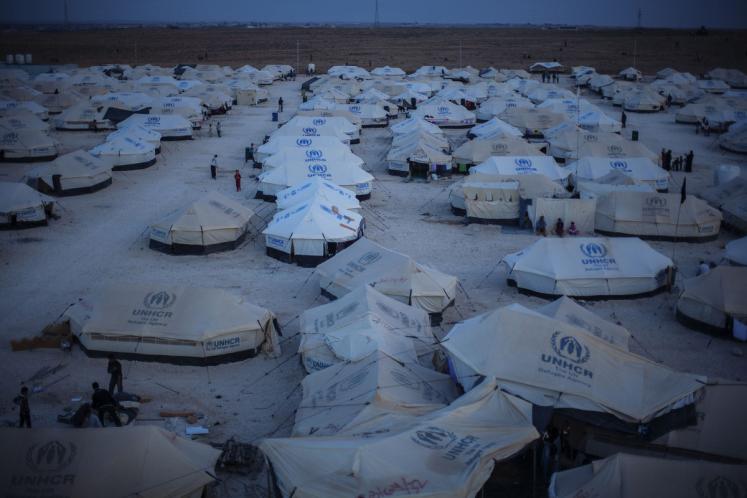Last week, I was privileged to be invited to the expert consultation for the World Humanitarian Summit (WHS) in Bonn, where the incredibly hard-working WHS Secretariat was crowdsourcing ideas for the Summit. But the primary critique from the floor was that there were no big ideas on the table.
Largely, this was a function of the process. Crowdsourcing is great for guessing the number of jellybeans in a jar, but it may be the enemy of innovative ideas, particularly when you are asking those who built a system to provide options for tearing it down.
So I wanted to take this space to try and throw out a few medium-sized ideas. These benefited from a small discussion on the margins of Bonn, with some very smart people.
All of the ideas may have drawbacks and face challenges – some serious. But the humanitarian system we have is flawed, and hopefully these ideas can stimulate others who have better ideas to offer their proposals.
1. An Independent Commission on Humanitarian Failure
Cardinal sins of the international humanitarian system include the common sin of the inability to learn from past mistakes, the slightly worse sin of groupthink, and the much more dangerous sin of dishonesty. The humanitarian system is rarely honest with itself or with its donors and stakeholders about what is working, existing in constant fear of being de-funded.
So I propose an independent commission on humanitarian failure. This would be made up of independent experts, and empowered to take reports from recipients of serious failures in the system and ethical lapses, and major flaws. Its role would not be to discuss success or to evaluate performance as a whole. But a mechanism for ensuring that the people around whom the system should be centred can point their fingers at our ethical failures and delivery failures could lead to a better humanitarianism.
2. Global insurance coverage for the bottom billion
I am indebted to Mukesh Kapila for this. I’ve been contemplating the idea that the humanitarian system should transform itself into a parametric insurance provider. This would be a model, where crossing a numerical boundary (e.g. a change in Global Acute Malnutrition, or increase in the number of refugees) would trigger an automatic allocation and/or deployment. In our discussion in Bonn, Mukesh suggested the idea of simply providing insurance to cover those most at risk, which might offer a more effective solution.
Such insurance would probably have to be provided to groups, rather than individuals. It would have to be subsidized and it would not be easy to do. Yet the African Risk Capacity model demonstrates how insurance models can work to embrace complex risk. Perhaps most compelling, the formal discipline that private sector insurance would bring to the table could help to finally secure investments in disaster risk reduction (DRR). Independently verified successful measures to reduce risk would lead to lower insurance premiums creating an incentive for governments and communities to invest in DRR. Even in cases where premiums would be subsidized, donors could assure governments of consistent funding that could be directed into other investment projects, again creating a positive incentive for DRR.
3. A global refugee education fund
It is entirely predictable that when people flee violence or disaster they tend not to return to their home countries for a very long time. The average length of displacement now approaches 17 years, and the number of displaced people is higher than at any point since World War II. Children in these situations lose vital years of education, and this has a long-term impact in the order of billions of dollars and percentage points of GDP. Studies reinforce that it is always economically worthwhile to have children in school.
One option to explore would be to reimburse governments for the cost of educating refugees through national educational systems. Figures are difficult to find, but where available (Lebanon and Jordan), the cost of emergency education ranges anywhere from 1.5 times the cost of the national system (Jordan, ages 5-11) to 5.3 times the cost (Lebanon, ages 12-17). This proposal reflects the strategy that Turkey has largely adopted, at significant cost, with Syrian refugees – simply mainstreaming them into their existing education systems. Doing the same with refugees the world over – and helping governments to bear the costs – would strengthen national education systems with additional investment, build stronger networks between refugees and host populations, and help to reduce marginalization of an already vulnerable group. It could also very quickly help to ensure that future generations are not left behind.
4. Four fixes to the current system
No country has a domestic office of humanitarian assistance. Instead, they have emergency management agencies. So why do we respond to emergencies with humanitarian aid? The most common definition of humanitarian assistance advanced by Global Humanitarian Donorship (GHD), has limited resonance in practice, partly because it is clear that allocations are not purely on the basis of need. Perhaps more worrying, the blurring of response-to-conflict with response-to-disaster may be harmful. It leads to confusion about needs, to the wrong tools being used in the wrong situations (20 years of emergency education in any country is almost guaranteed to be an inefficient use of resources), and countless other issues relating to capacities, systems and so forth. So why not just use clear terms, and in doing so, find a way to separate out disaster response from conflict response? This would, in principle, mean ceasing all use of the word humanitarian outside of the response to armed conflict.
Coupled with the point above, all emergency response actions – and perhaps “humanitarian” action in conflict, if its purpose is to respond to a sharp escalation in violence – should have a mandatory sunset clause. For example, after 180 days, all emergency activity would have to stop. Ideally, this would be mirrored by planning cycles – an emergency phase (e.g. the first 120 or 180 days); a medium-term timeframe for the follow-on plan (e.g. 2 years); and, if needed, a long term plan (e.g. 5 years). This would also serve, for example, to prevent any programme that provided decades of emergency schooling, or emergency food assistance, without being forced to consider alternatives.
International humanitarian capacity should formally adopt the principle of being the provider of last resort. Funds and decisions should be forced to flow to the local level and through local structures, and international actors should have to justify intervention by showing that there is no local capacity to do the job. This principle loosely exists in theory, but is not binding and not followed in practice. It is easier for money to flow through international networks, because these networks are not linked to local actors or prepared prior to the need for assistance. This is a mechanism for ensuring subsidiarity, and linked to (d) below.
International capacity should be decentralized as much as possible. There is no justification for so many humanitarian agencies to be located in Geneva and New York. This is the kind of proposal that is amenable to a hard target – perhaps 60% of all staff and 60% of all funds could be located in and managed from the regions by 2018. This would allow for the kinds of relationships that enable the principle of last resort and investment in supporting national capacities prior to a disaster.
-
Clearly set out, in principle and in practice, the difference between “humanitarian” and “emergency” assistance
-
Mandatory sunset clauses
-
Adopt the principle of last resort
-
Big-Bang regionalism
5. Ask for a new resolution from the General Assembly on humanitarian principles.
The international humanitarian community has a fixation with resolution 46/182, which articulates a framework for humanitarian assistance and the principles that should inform such assistance. Many international humanitarian advocates argue that these principles are not observed in practice, and want them to be upheld and honoured. Others suggest that the principles are outdated, irrelevant in practice, do not reflect the modern era.
The UN is an organization in the service of Member States. It is at its strongest when as many Member States as possible are supportive and engaged in its work. Formally asking the Member States to explore what principles should govern humanitarian action, and working through a consensus might ensure that there is actual support for humanitarian action when needed. There are many possible outcomes to such a process– including a reaffirmation; a strengthening; an exposure of divisions and paralysis; and a revised set of principles. It is arguable that whatever the outcome would be, it could be more legitimate than the articulation in 46/182, and more concretely useful.
6. Commit the UN system to a full, independent mandate review
Many people say that the UN is not fit for purpose. A fully independent mandate review could take a look at how humanitarian response has changed (perhaps also recognising the proposed split between “humanitarian” and “emergency”), define a set of tasks that the UN could play in supporting response, and then map current mandates and capacities against this.
The point is that there many possible ways to advance this agenda. Another idea that I will explore in a future post is organizing the UN to support city-twinning on DRR. This would involve finding cities that are near to each other and that face similar risks but have disparities in preparedness, and the UN providing a mechanism and standing funds to support exchanges of capacity as needed. There are many smart steps that could be taken before the Summit to demonstrate that change is happening, and nudge the system in the right directions.
A closing note, but somewhat less optimistic. From Bonn, and the prior consultations, the most conservative group appears to be senior-level aid officials from donor countries – many of whom fear that the system would stop working if changed in any way. The rhetoric of change from Ministers will not translate to action if the WHS must rely on the upper echelons of donor bureaucracies to provide their vision. Rather, they need to collate ideas, offer a vision, and take it straight to the political level for action.
A true global commitment is needed, but this requires political will first and foremost. And without some bravery on vision to build political support, the Summit may not even “propose solutions to our most pressing challenges and set an agenda to keep humanitarian action fit for the future,” let alone make those solutions real.
Suggested citation: Rahul Chandran., "Six Walks in a Humanitarian Wood," UNU-CPR (blog), 2015-05-20, https://unu.edu/cpr/blog-post/six-walks-humanitarian-wood.


